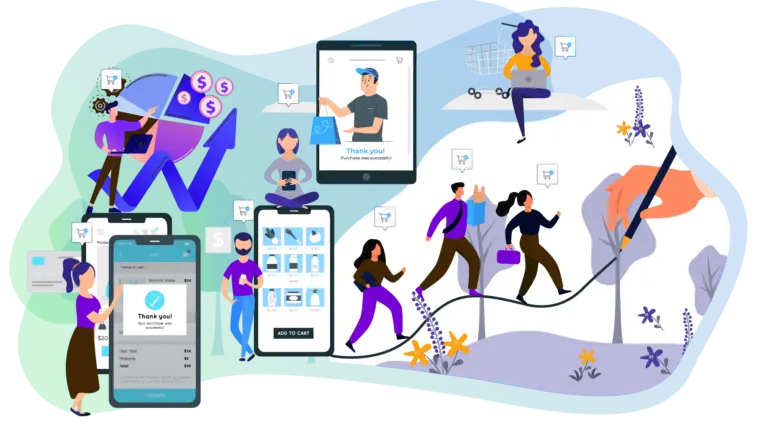The world of e-commerce continues to evolve rapidly, reshaping how brands connect with customers and deliver value. As technology advances and consumer expectations rise, staying ahead means adapting early. From conversational AI to sustainable shopping, here are the five emerging ecommerce trends that every brand should watch closely in 2025.
Conversational Commerce Powered by AI
Shopping online is becoming more interactive and intuitive. E-commerce is shifting from static product listings to dynamic, personalized conversations. Shoppers now rely on AI chatbots, virtual shopping assistants, and voice-based search to find products faster and smarter.
AI-driven software for e-commerce enables predictive recommendations, instant responses, and contextual shopping experiences. Platforms that integrate generative AI tools are seeing increased engagement and reduced cart abandonment.
Social Commerce & Shoppable Content
Social platforms are transforming into powerful selling channels. TikTok, Instagram, and Pinterest are no longer just about inspiration, they’re full-fledged ecommerce marketplaces. Shoppers can now purchase products directly within apps, creating a seamless journey from discovery to checkout.
This rise of “ambient shopping” means that brands must be present wherever customers spend their time. Using the best e-commerce software with built-in social integrations helps track performance, sync inventory, and manage transactions across platforms.
Forward-thinking brands are leveraging influencers, short videos, and live shopping to turn engagement into conversions.
Headless & Composable Commerce
Legacy platforms are limiting innovation. To stay agile, businesses are adopting headless commerce, a model where the front end (what customers see) is separated from the backend system. This allows developers to design flexible, high-performing user experiences across devices.
Composable commerce takes it further by allowing brands to select the best tools for each function, payment gateways, search engines, or analytics, and connect them through APIs.
The right software for e-commerce should offer modularity, scalability, and the ability to integrate with emerging technologies. This structure lets brands adapt quickly to market changes without rebuilding their entire system.
Key Features of Modern E-Commerce Software
Here are five core features every brand should look for when evaluating platforms:0
- AI and Predictive Analytics: Understand customer intent and personalize recommendations.
- Social Media Integration: Enable in-app shopping and influencer-driven campaigns.
- Headless Architecture: Allow flexible design across multiple digital touchpoints.
- Real-Time Logistics: Manage inventory and delivery from one dashboard.
The best e-commerce software combines all these capabilities while offering scalability, reliability, and strong data security.
FAQs
What is the biggest trend in e-commerce right now?
The most impactful trend is conversational AI. It enables personalized product discovery through natural language, reshaping how customers interact with online stores.
How does e-commerce software help businesses grow?
E-commerce software streamlines order management, payment processing, and customer insights, helping brands operate efficiently and scale faster.
What makes the best e-commerce software stand out?
The best ecommerce software offers modular flexibility, AI integration, social media connectivity, and sustainability tools, all designed to improve customer experience and operational agility.
Why should businesses invest in modular software for ecommerce?
Modular software for e-commerce allows brands to customize their systems, add new features easily, and stay flexible as technology evolves.




